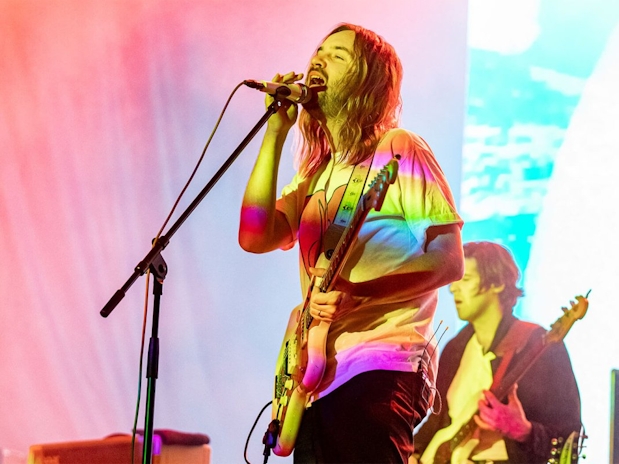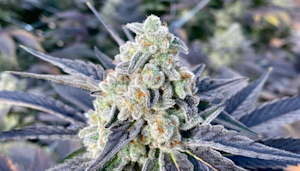The 1960s and 1970s witnessed the birth and flourishing of psychedelic rock, a genre that transcended conventional musical boundaries and tapped into the deeper recesses of human consciousness.
This era saw the emergence of bands whose experimental sounds and lyrical depth not only defined a generation but also laid the groundwork for countless musical explorations to come. Let’s delve into the profound impact of some key players in the psychedelic rock scene during these transformative years.
The classic era of psychedelic rock, spanning the 1960s and 70s, was a period of immense creativity and exploration in the music world. With events like the Summer of Love, this was when psychedelic rock crystallized as a genre driven by bands that pushed the boundaries of musical expression.
1. The Beatles (1960 – 1970)

The Beatles weren’t just the world’s most famous band; they were also among the chief architects of the psychedelic sound. Their foray into psychedelia was marked by groundbreaking albums like “Revolver” (1966) and “Sgt. Pepper’s Lonely Hearts Club Band” (1967).
These albums were a radical departure from their earlier pop-oriented work, introducing complex arrangements, innovative studio techniques, and a range of unusual instruments.
“Lucy in the Sky with Diamonds” and “A Day in the Life” are quintessential examples, showcasing the band’s mastery of the psychedelic form, both lyrically and musically.
The Beatles’ psychedelic phase was a reflection of the times – a period of experimentation and a quest for deeper meaning, echoed in their music’s evolving complexity.
2. Pink Floyd (1964 – 2014)

Pink Floyd’s significance in the realm of psychedelic rock is monumental. Their early work, particularly under the leadership of Syd Barrett, was heavily influenced by the psychedelic culture of the 1960s.
Albums like “The Piper at the Gates of Dawn” (1967) featured whimsical lyrics and innovative sonic textures that would become the band’s hallmark. However, it was their later work, such as “Dark Side of the Moon” (1973) and “Wish You Were Here” (1975), that solidified their status as psychedelic rock legends.
These albums explored complex themes like mental illness, greed, and the passage of time, using elaborate musical structures, pioneering synthesizer use, and studio experimentation. Pink Floyd’s sound was not just music; it was an immersive experience, a portal to other dimensions of consciousness and perception.
3. The Jimi Hendrix Experience (1966 – 1969)

Jimi Hendrix was a force of nature, a guitarist whose style and technique forever changed the landscape of rock music. His band, The Jimi Hendrix Experience, was pivotal in bringing psychedelic rock to a broader audience.
Albums like “Are You Experienced” (1967) and “Electric Ladyland” (1968) were not only showcases of Hendrix’s extraordinary guitar skills but also of his exploration into the psychedelic soundscape.
Songs like “Purple Haze” and “The Wind Cries Mary” were more than just tracks; they were sonic explorations, blending blues, rock, and psychedelia into a potent mix.
Hendrix’s guitar work was groundbreaking; his use of feedback, distortion, and wah-wah effects created an entirely new sound that would influence generations of musicians to come.
The Modern Age Of Psychedelia
The resurgence of psychedelic rock in recent decades has brought forward bands that have reimagined and reinvigorated the genre with new sounds, innovative techniques, and a modern approach.
This fresh wave of psychedelic exploration draws on the rich legacy of the past while charting new sonic territories. Here’s an in-depth look at three such influential bands in the modern psychedelic scene.
1. Tame Impala (Since 2007)

Tame Impala, the brainchild of Australian multi-instrumentalist Kevin Parker, stands at the forefront of modern psychedelic rock. The project, often mistaken as a band, is Parker’s solo endeavor, where he writes, records, and produces all of the music.
Tame Impala’s debut album, “Innerspeaker,” released in 2010, marked a significant moment in the modern psychedelic movement, drawing listeners in with its lush, reverb-soaked soundscapes and Parker’s Lennon-esque vocals.
However, it was with the release of “Lonerism” in 2012 that Tame Impala cemented its place in contemporary music. The album is a masterpiece of introspection, wrapped in a kaleidoscope of swirling synths, fuzzy guitars, and infectious melodies.
Songs like “Feels Like We Only Go Backwards” and “Elephant” showcase Parker’s ability to blend the experimental essence of psychedelia with pop sensibilities.
The subsequent album, “Currents,” in 2015, marked a stylistic shift, embracing more electronic and pop elements. It’s a sonic odyssey that explores themes of personal transformation and emotional maturation, embodied in tracks like “Let It Happen” and “The Less I Know The Better.”
This evolution in sound demonstrates Tame Impala’s versatility and Parker’s prowess as a producer and songwriter, making the project a beacon of modern psychedelic music.
2. King Gizzard & the Lizard Wizard (Since 2010)

With their relentless output and genre-hopping tendencies, King Gizzard & the Lizard Wizard is a band that defies easy categorization. Hailing from Melbourne, Australia, they have become one of the most prolific and adventurous bands in the psychedelic rock scene.
Known for their energetic live shows and a willingness to experiment, they have explored a range of sounds, from garage rock to heavy metal and even jazz.
Their album “Nonagon Infinity,” released in 2016, is a testament to their inventive spirit. It’s an album designed as an infinite loop, where each song seamlessly flows into the next, and the final track circles back to the beginning.
This feat of musical engineering, combined with their frenetic energy and psychedelic motifs, creates a listening experience that is both disorienting and exhilarating.
“Polygondwanaland,” another standout album, delves into progressive rock and microtonal tuning, showcasing the band’s technical skill and creative ambition.
Their ability to push the boundaries of psychedelic rock while maintaining a coherent and distinctive sound makes them a vital force in the genre’s modern landscape.
3. The Black Angels (Since 2004)

The Black Angels from Austin, Texas, have carved out a niche in the psychedelic rock genre with their dark, brooding sound. They draw inspiration from the psychedelic music of the 1960s, but infuse it with a modern edge and a hint of garage rock grit. Their music is characterized by heavy, droning guitar riffs, hypnotic rhythms, and haunting vocals, creating a sound that is both mesmerizing and intense.
Their debut album “Passover,” released in 2006, is a powerful statement, filled with songs that are politically charged and laden with social commentary. Tracks like “Young Men Dead” and “The First Vietnamese War” reflect the band’s ability to use the psychedelic medium as a tool for critical reflection on war and violence.
In subsequent albums, such as “Phosphene Dream” and “Death Song,” The Black Angels continue to evolve their sound. They incorporate more dynamic rhythms and expansive soundscapes while maintaining the dark, introspective quality that defines their music.
The Black Angels’ contribution to modern psychedelic rock is significant, not only in their musical output but also in their role as founders of the Austin Psych Fest (now Levitation), a festival that has become a gathering point for the psychedelic music community.
4. MGMT (Since 2002)

MGMT, formed by Benjamin Goldwasser and Andrew VanWyngarden, burst onto the scene with their debut album “Oracular Spectacular” in 2007. The album, particularly tracks like “Electric Feel” and “Kids,” struck a chord with a wide audience, blending catchy pop hooks with psychedelic elements. However, it was their subsequent albums that truly showcased their depth and commitment to the psychedelic genre.
“Congratulations,” released in 2010, marked a departure from their pop-oriented debut, delving into more experimental and psychedelic territory. The album, with tracks like “Siberian Breaks” and “Flash Delirium,” offered complex arrangements and surreal lyrics, reflecting the band’s eclectic influences ranging from 1960s psychedelia to 1980s pop.
Their later work, including the 2018 album “Little Dark Age,” continues to demonstrate their versatility and willingness to experiment. This album blends synth-pop with psychedelic rock, creating a sound that is both retro and distinctly modern. MGMT’s ability to evolve while maintaining their psychedelic roots has solidified their status as key players in the genre’s modern landscape.
5. Psychedelic Porn Crumpets (Since 2014)

mixdownmag
Emerging from Perth, Australia, Psychedelic Porn Crumpets have quickly made a name for themselves with their high-energy brand of psychedelic rock. The band’s debut album, “High Visceral, Part 1,” released in 2016, introduced listeners to their blend of heavy guitar riffs, rapid tempo changes, and expansive soundscapes.
Their music, characterized by its intensity and complexity, draws on the legacy of classic psychedelic rock while infusing it with a sense of urgency and modern edge. Albums like “And Now for the Whatchamacallit” showcase the band’s ability to craft songs that are both wildly imaginative and tightly structured. Tracks like “Bill’s Mandolin” and “Hymn for a Droid” exemplify their knack for creating music that is at once chaotic and meticulously arranged, offering a fresh take on the psychedelic experience.
Psychedelic Porn Crumpets continue to push the boundaries of the genre with each release, combining relentless energy, intricate musicianship, and a flair for the dramatic. Their contribution to the modern psychedelic rock scene is a testament to the genre’s enduring appeal and its capacity for continual reinvention.
Takeaway
The intertwining of cannabis and psychedelic rock music forms a tapestry rich in sensory and emotional depth, offering an experience that transcends the sum of its parts. This synergy between a natural enhancer of perception and a genre of music known for its mind-expanding qualities has long been celebrated in various cultures and communities. Let’s delve into why this combination resonates so profoundly with enthusiasts of both realms.
Cannabis has been recognized for its ability to heighten sensory perception, making the experience of listening to music more profound and immersive. When under the influence of cannabis, listeners often report a heightened awareness of sound textures, deeper engagement with musical layers, and an increased emotional response to melodies and rhythms.
This enhanced listening experience is particularly synergistic with psychedelic rock, a genre known for its complex soundscapes, intricate compositions, and emotional depth.
Psychedelic rock, with its roots in the counterculture movement of the 1960s and 70s, has always been about pushing boundaries and exploring the depths of the human psyche. The genre’s use of unconventional instruments, experimental sound techniques, and introspective lyrics aligns perfectly with the introspective and sensory-enhancing effects of cannabis.
When combined, cannabis and psychedelic rock music can create a powerful and transformative experience, allowing listeners to explore new dimensions of sound and self-awareness.
This combination’s allure persists into modern times, with contemporary psychedelic bands and cannabis strains continuing to evolve and appeal to new generations. The timeless appeal of this combination lies in its ability to provide an escape, a means of exploration, and a tool for self-discovery.
Whether it’s the classic tunes of The Beatles and Jimi Hendrix or the modern sounds of Tame Impala and King Gizzard & the Lizard Wizard, the fusion of cannabis and psychedelic rock continues to offer a unique and profoundly enjoyable experience.
The relationship between cannabis and psychedelic rock is more than just a cultural phenomenon; it’s a testament to the power of music and natural substances to elevate the human experience.
It underscores the deep connection between our senses, emotions, and consciousness, offering a unique way to explore and appreciate the world around us.
Herb Recommended Products:
READ MORE











